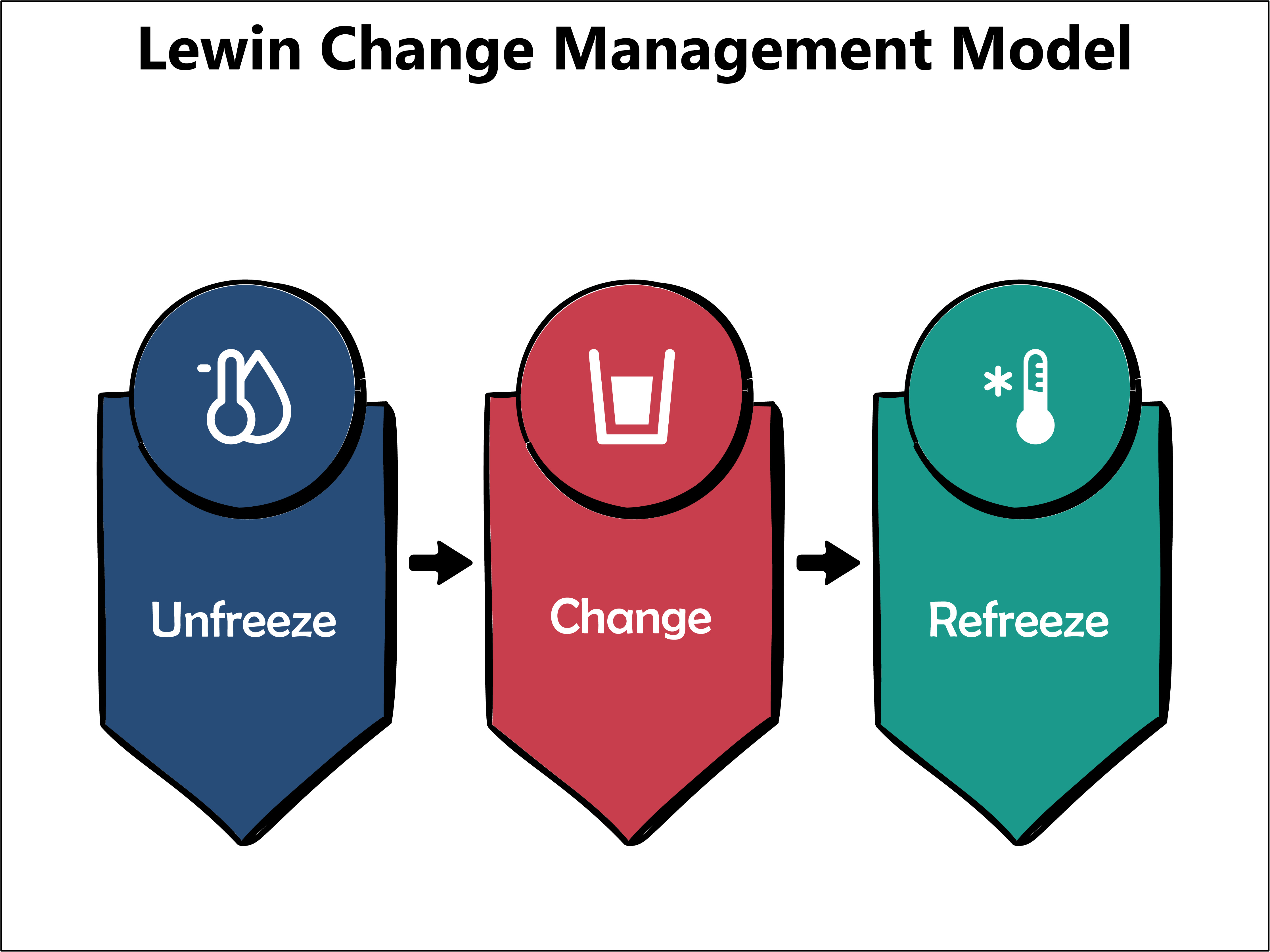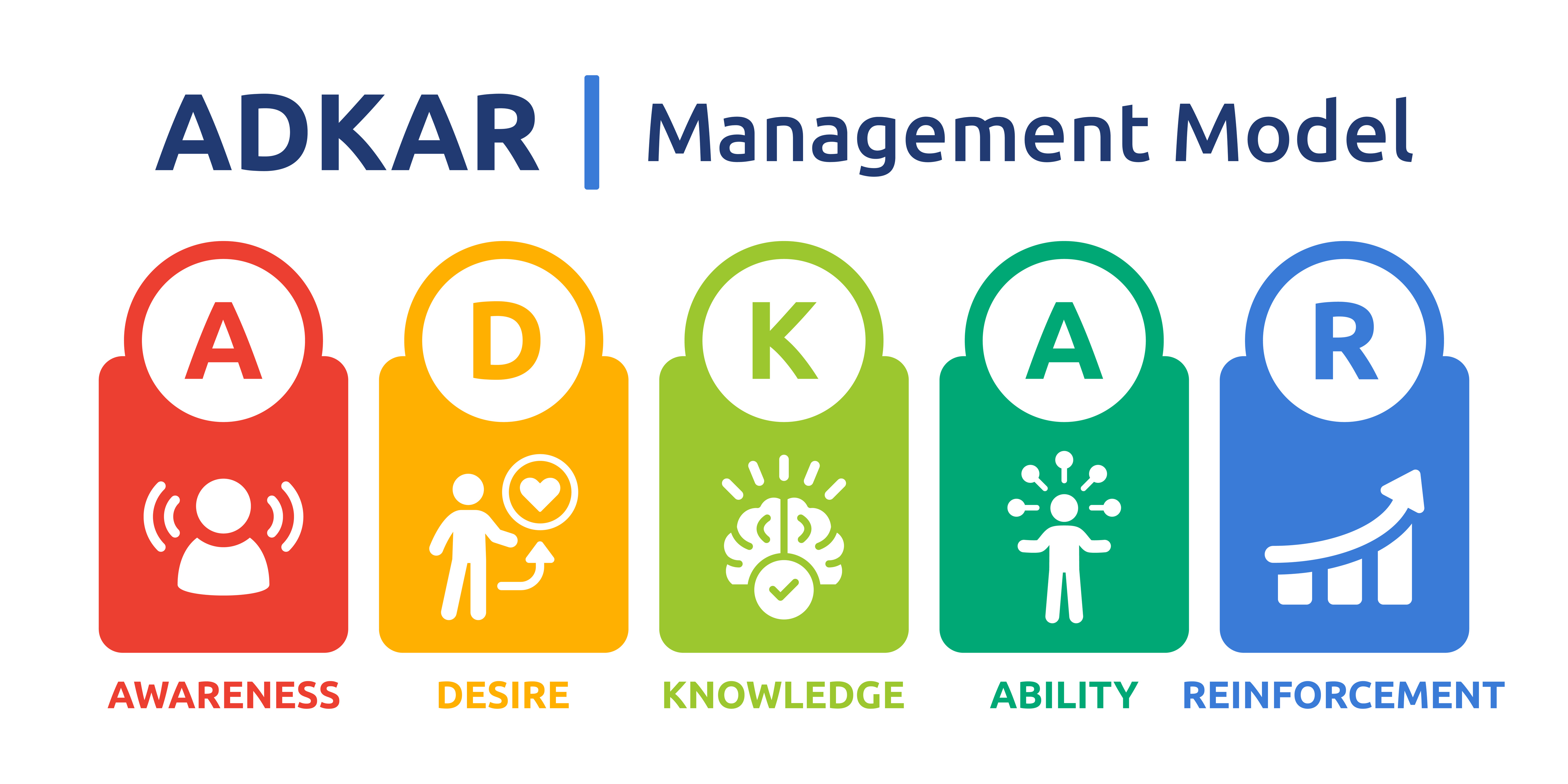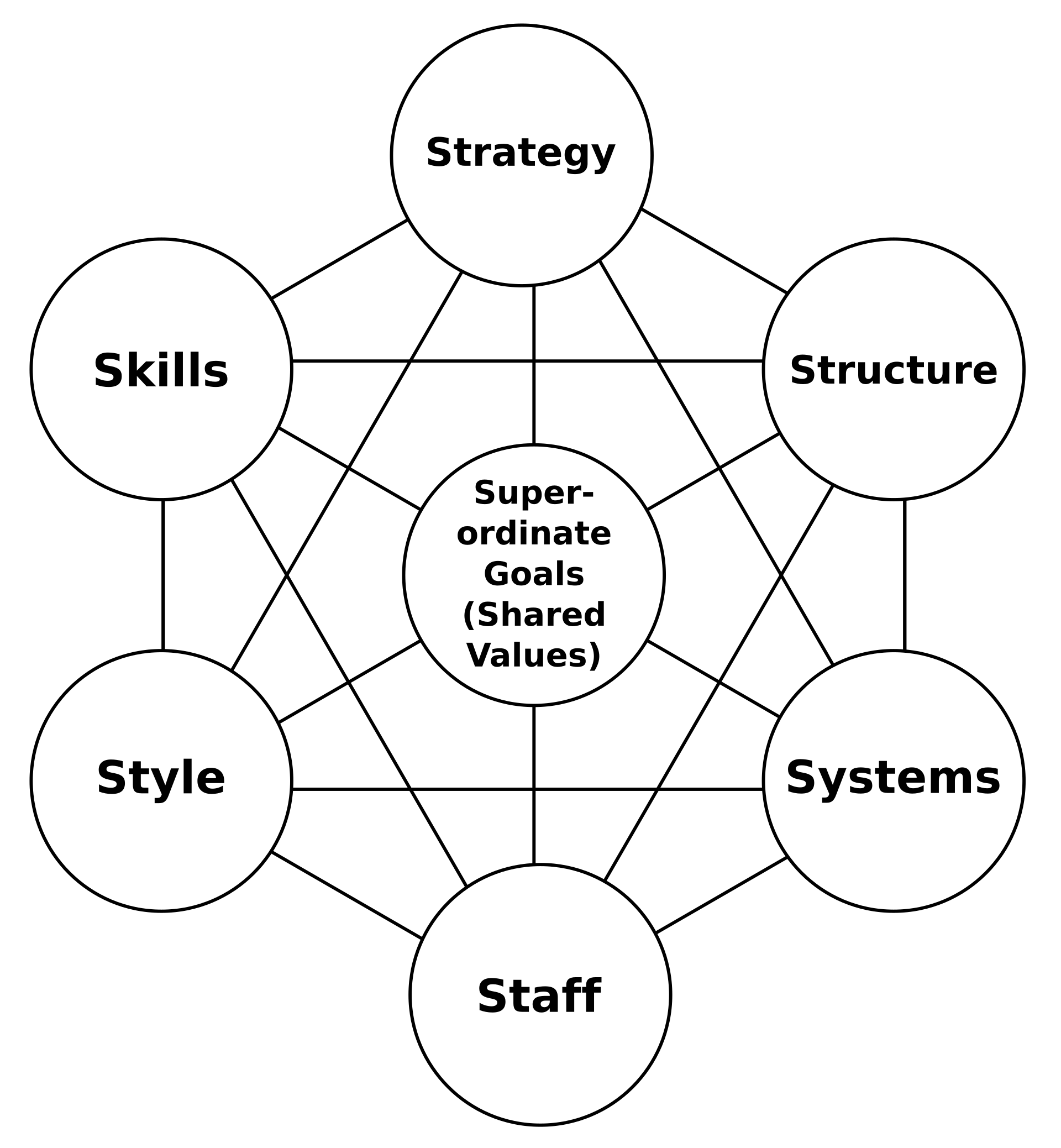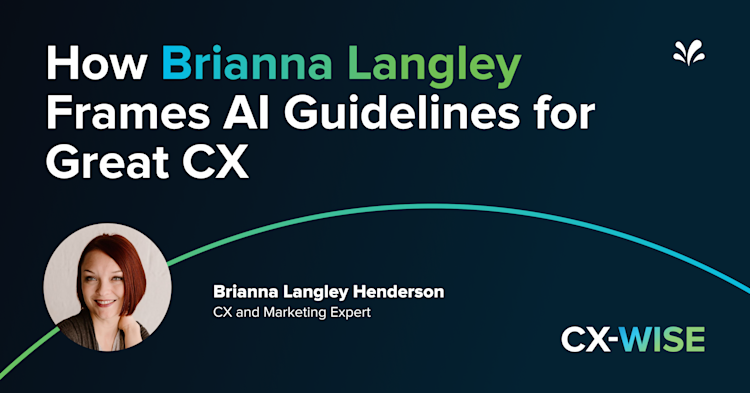What is a change management model?
A change management model is a structured approach to transitioning individuals, teams and organizations from their current state to a desired future state. These models serve as a roadmap for effectively implementing change, ensuring that every step is strategically planned and executed.
In the dynamic world of customer service, these models are essential for navigating technological advancements, evolving customer expectations and operational shifts. By providing a clear roadmap, change management models ensure that changes are implemented smoothly, minimizing disruptions and maximizing efficiency.
However, it's crucial to remember that successful change management goes beyond technical implementation. It's equally important to address the human element, considering how change impacts employees' roles, responsibilities and overall job satisfaction. By fostering a culture of adaptability and prioritizing employee well-being, you can enhance your ability to deliver exceptional customer experiences.
To illustrate, consider a traditional brick-and-mortar retailer struggling to compete with online giants. To stay relevant, they invest heavily in omnichannel customer experiences, including buying online, picking up in-store options and using advanced inventory management systems. Without a comprehensive change management strategy, this transformation could be met with resistance from store managers, confusion among employees and a subpar customer experience.
By implementing a well-structured change management model, the retailer can effectively address these challenges, ensuring a smooth transition and maximizing the benefits of the new strategy.
Change management theory vs. change management model
Understanding the difference between change management theory and model is very important. Many businesses often confuse them and falter down the road.
Aspect | Change management theory | Change management model |
Definition | Explains how and why change occurs | Provides a step-by-step guide to implementing change |
Focus | Provides a general understanding of the change process. | Offers a practical framework for guiding change initiatives. |
Scope | Broad and conceptual. | Specific and actionable. |
Application | Includes understanding the principles of change, such as how to motivate employees and foster acceptance | Includes planning, implementation and evaluation of change initiatives. |
Implications for customer service | Helps understand customer resistance and behavior during changes, such as why customers might resist changes | Provides clear steps for improving customer service processes, such as steps to implement a new protocol. |
Let’s dive straight into our eight change management models.
As we discuss these models, we also illuminate how they can be applied to customer service functions planning to change.
Lewin’s change management model
🔬 Kurt Lewin, a social psychologist
🗓️ 1950s
💡 Focuses on the dynamics of group behavior and the importance of understanding and facilitating change in a structured manner.
Lewin’s change management model is a simple framework that involves three main steps: unfreeze, change and refreeze.

Step 1: Unfreeze
This step, known as 'Unfreeze’ is a crucial stage in the change management process. It involves breaking down the existing status quo, challenging current beliefs, behaviors and processes and preparing for the upcoming changes.
⚙️ Application to customer service
Identify areas in customer service that need improvement, gather feedback from customers and prepare the team for upcoming changes. This might include training sessions to address service gaps, such as slow response times, long hold times or handling demanding customers.
Step 2: Change
The 'Change' step is a pivotal phase in the change management process. It is in this step that you implement the changes, introducing new processes, behaviors and ways of thinking.
⚙️ Application to customer service
Roll out new customer service protocols, tools or practices, such as a new contact center CRM system or enhanced agent training programs. Ensure continuous support and communication to help the team adapt to these changes. Monitor the implementation closely to address any issues, such as resistance to new processes.
Step 3: Refreeze
In this step, you solidify the new state after the change. This step is crucial for ensuring that changes are embedded into your organization and become the new norm.
⚙️ Application to customer service
Reinforce new customer service practices, such as adhering to updated service protocols and using enhanced training techniques. Celebrate successes, such as improved customer satisfaction scores, to motivate your team and empower them to make the new processes stick.
Kotter’s eight-step change management model
🔬 Dr. John Kotter, founder of Kotter International
🗓️ 1995
💡Focuses on creating a sense of urgency and building a guiding coalition to drive successful change.

Source
Kotter’s change management model explains the psychology of the people going through a change and suggests eight different steps to tackle it.
Step 1: Create a sense of urgency: Highlight the need for change and its importance. Creating urgency ensures that the team understands the necessity of the change and is ready to act.
Step 2: Build a guiding coalition: Form a group of influential leaders and stakeholders, such as department heads or senior managers, to support and drive the change. Also, ensure buy-in from key team members and foster a collaborative effort.
Step 3: Form a strategic vision: Develop a clear vision and actionable steps to achieve the change.
Step 4: Enlist a volunteer army: Persuasively encourage employees to take ownership of the change and actively participate. This approach empowers them and can significantly boost their engagement.
Step 5: Enable action by removing barriers: Identify obstacles hindering progress. Streamline processes and reduce inefficiencies.
Step 6: Generate short-term wins: Achieve and celebrate small victories to build momentum. This boosts team morale and demonstrates the change's benefits.
Step 7: Sustain acceleration: Use the momentum from short-term wins to drive further change.
Step 8: Institute change: Embed the new changes into the organization's culture. These practices soon become the norm.
⚙️ Application to customer service
Let’s say you plan to implement a new CRM system to improve customer interactions and data management. Here’s how to go about the change using Kotter’s change management model:
⏰ Creating a sense of urgency: You highlight declining customer satisfaction, increasing call volumes and lost revenue opportunities to your customer service team by clearly pointing out existing inefficient processes.
👷 Building a guiding coalition: After the initial communication, you assemble a cross-functional team of customer service representatives, supervisors, IT and marketing to help drive the change initiative.
🎯 Creating a vision: Make sure the newly formed team clearly understands how the new CRM integration with customer service will improve customer experiences and operational efficiency.
📧 Communicating the vision: Conduct town hall meetings, distribute informative materials and utilize internal business communication channels to share the vision and benefits of your new system to the larger team.
💼 Empowering employees: Provide training and support to equip contact center agents with the necessary skills to utilize the new CRM system effectively.
🥇 Generating short-term wins: Carefully monitor the contact center performance and celebrate early success, such as improved response times or first-contact resolutions.
🔧 Consolidating gains and producing more change: Analyze initial results, identify areas for improvement and implement additional enhancements to the CRM system.
⛳ Anchoring new approaches in the culture: Integrate the new CRM system into daily operations and performance metrics to ensure long-term sustainability.
ADKAR change management model
🔬 Jeff Hiatt, founder of Prosci
🗓️ Late 90s
💡 Focuses on the five key building blocks of successful change: Awareness, Desire, Knowledge, Ability and Reinforcement.
The ADKAR change management model argues that organizational change is only possible when individuals change. Here are the five steps it talks about:

Step 1: Awareness
Create awareness of the need for change. Employees must understand why the change is necessary and what it entails.
Step 2: Desire
Foster the desire to participate in and support the change. This involves addressing the personal motivations of employees.
Step 3: Knowledge
Provide knowledge on how to change. This includes training and education on the new tools, processes or skills required.
Step 4: Ability
Develop the ability to implement the change on a day-to-day basis. This involves practice and support to build proficiency.
Step 5: Reinforcement
Reinforce the change to ensure it sticks. This includes recognition, rewards and feedback to maintain the new practices.
⚙️ Application to customer service
Following the limited capabilities of your existing knowledge base, which adds up to longer resolution times, you propose implementing a new knowledge base software to improve accessibility and efficiency. Do you feel the ADKAR model is the right change management model to go about it? Let's see how the transition would look.
Awareness: By clearly communicating the need for a new knowledge base, you can help the employees understand the necessity of the change. Issues like inconsistent information, lengthy resolution times and customer frustration due to repeated questions can be highlighted.
Desire: Emphasize how the new knowledge base will benefit agents by reducing repetitive tasks, improving problem-solving abilities and enhancing job satisfaction.
Knowledge: Provide comprehensive training on the new system's features and functionalities.
Ability: Offer hands-on practice and support during the transition period. Create opportunities for agents to experiment with the new system and provide feedback.
Reinforcement: Recognize and reward agents who effectively utilize the knowledge base. Based on user feedback, continuously update and improve the system.
Nudge theory
🔬 Richard H. Thaler (economist and Nobel Laureate) and Cass R. Sunstein (Professor, Havard Law School)
🗓️ 2008
💡Based on the concept that small, subtle changes in the environment can predictably influence people’s behavior without restricting their freedom of choice.
Nudge theory suggests that minor environmental adjustments or how choices are presented can significantly impact decision-making and behavior. It relies on principles from behavioral economics and psychology. By understanding how people make decisions, organizations can design interventions that "nudge" individuals toward desired behaviors.
⚙️ Application to customer service
Continuing from the example above, to encourage agents to use the knowledge base more frequently, consider these nudges:
Social proof: Highlight the number of times a specific knowledge article has been viewed or rated positively. This can encourage other agents to use the knowledge base.
Default options: When agents receive a customer inquiry, make the knowledge base the default search option. This can subtly guide them to use the resource.
Gamification: Introduce a points system or leaderboard to recognize agents using the knowledge base effectively, creating a friendly competition.
Loss aversion: Highlight the negative consequences of not using the knowledge base, such as increased average handle times or customer dissatisfaction.
McKinsey 7-S framework
🔬 Tom Peters and Robert Waterman, Jr, business consultants
🗓️ 1980s
💡Designed to analyze and improve organizational effectiveness through its seven interrelated elements.
McKinsey's 7-S framework divides the change management program into seven phases.

Strategy: The plan devised to maintain and build a competitive advantage
Structure: The way the organization is arranged, including hierarchy and reporting lines
Systems: The daily activities and procedures staff use to complete tasks
Shared values: Core values as showcased in the corporate culture and work ethics of the organization
Style: The leadership approach of top management and the company's overall operating style
Staff: The employees and their general capabilities
Skills: The actual skills and competencies of the employees working for the company
⚙️ Application to customer service
Realizing the growing competition and lack of product differentiation, you want to shift your business focus from revenue-oriented to customer-centricity. You believe the McKinsey 7S framework is the ideal change management model to achieve this. Let’s look at the action plan.
Strategy: Shift the focus from operational efficiency to customer experience as the primary strategic goal.
Structure: Create cross-functional teams to collaborate on customer-centric initiatives and break down silos.
Systems: Implement new technology and processes that support a customer-centric approach, such as customer journey mapping, omnichannel routing and more.
Shared values: Emphasize a customer-first culture where employees are empowered to solve customer problems.
Skills: Equip employees with customer service skills, empathy and problem-solving abilities through training and development.
Style: Foster a leadership style that prioritizes customer feedback and empowers employees to make decisions.
Staff: Hire and retain employees who are passionate about delivering exceptional customer experiences.
Kubler-Ross change curve
🔬 Elisabeth Kübler-Ross, a psychiatrist
🗓️ 1960s
💡Focuses on the five stages of grief and how individuals cope with significant life changes. It highlights the emotional journey experienced when confronted with change.
The Kubler-Ross Change Curve, originally describing the five stages of grief, can also apply to customer and agent reactions during service changes. These stages — shock and denial, anger, bargaining, depression and acceptance — reflect the emotional journey experienced when confronted with change.
Shock and denial: When faced with service changes, customers might initially resist the need for change. They may feel confused and refuse to accept that the new system or service is better.
Anger: As the reality of the change sets in, customers might feel frustrated or angry and express dissatisfaction with the new service or system.
Bargaining: During the bargaining stage, customers might try to negotiate or find ways to return to the old service. They could also request to retain certain aspects of the previous system.
Depression: Customers may feel overwhelmed or helpless, believing the new service will never meet their needs as effectively as the old one.
Acceptance: Customers begin to accept the change, understand its benefits and integrate it into their routine. They start to use the new service confidently.
⚙️ Application to customer service
A significant change in call center service level agreements (SLAs) can also trigger the Kubler-Ross Change Curve among customer service agents:
😲 Denial: Agents may initially resist the new SLAs, believing they are unrealistic or unattainable.
😡 Anger: Frustration and resentment may arise as agents feel overwhelmed by the increased expectations and pressure to meet new targets.
😣 Bargaining: Agents might negotiate for more resources or support to meet the new SLAs.
😞 Depression: A sense of hopelessness and call center burnout may set in as agents struggle to consistently meet the standard call center agent performance metrics.
🙂 Acceptance: Over time, agents may adapt to the new SLAs and find ways to improve efficiency and productivity.
Bridges’ transition model
🔬 William Bridges, a change consultant
🗓️ 1991
💡 Core idea: Emphasizes the emotional and psychological transitions people undergo during change rather than the change itself.
Bridge’s transition model consists of three phases.
Phase 1: Ending, losing, letting go
This phase involves acknowledging and grieving over what is being left behind. People may feel fear or anger and demonstrate resistance. It would help if you addressed customers' concerns and emotions by clearly communicating the reasons for change and how it will benefit them.
Phase 2: The neutral zone
This phase is a period of confusion and uncertainty as people transition between the old and new ways. Try to provide support and reassurance to customers. Use feedback to adjust the transition process as needed.
Phase 3: The new beginning
This phase involves embracing new ways and understanding their benefits. It brings acceptance and renewed energy. It would be best if you highlighted success stories and the benefits of the change. Continue to support customers to ensure the new processes are fully adopted.
⚙️ Application to customer service
Many organizations have adopted a hybrid work model in the wake of the COVID-19 pandemic. This significant shift in work culture can be effectively managed using the Bridges transition model:
Ending: The traditional office-based work model is ending. Employees must let go of the daily commute, in-person interactions and the familiar office environment.
Neutral zone: This is a period of adjustment as employees navigate between remote and in-office work. Challenges might include balancing work and personal life, establishing new communication norms and adapting to technology.
New beginning: The hybrid work model becomes the new norm. Employees develop new routines, embrace technology for collaboration and find a balance between remote and in-person work.
PDCA Cycle
🔬 Walter A. Shewhart, later popularized by W. Edwards Deming
🗓️ 1950s
💡 Focuses on iterative problem-solving and continuous improvement through a four-step cyclical process.
Here are the four steps of the PDCA cycle in the context of its implementation in customer service.
✅ Plan
Identify an area for improvement in customer service. Develop a plan with clear objectives and steps to achieve them. This phase involves gathering data and setting goals. For instance, plan to reduce the average hold time by analyzing current response rates and identifying bottlenecks.
✅ Do
The 'Do' phase is not just about implementing the plan, but about learning from the process. It's an opportunity to test the effectiveness of the plan on a small scale, such as rolling out a new customer service protocol to a specific team or department. This phase encourages you to monitor the implementation closely and adapt as needed. For example, you could introduce a new live chat support feature to a subset of your service team and observe its impact.
✅ Check
The 'Check' phase is a moment of reflection in the PDCA cycle. It evaluates the implementation results and compares them against the objectives set in the planning phase. This phase emphasizes using data to determine whether the change has led to improvements, making it a critical part of the process.
✅ Act
Based on the evaluation, decide whether to implement the change on a larger scale, modify it or abandon it. If successful, roll out the change company-wide and ensure it becomes part of the standard process.
Selecting the right change management model for your business
Choosing the appropriate change management model is crucial for a successful business transformation. The right model aligns with your organization's needs and facilitates a smoother transition. Here are key factors to consider when selecting the best approach:
Company size: Larger organizations often benefit from structured models like Kotter's eight-step change management model, which provides a clear roadmap for complex changes. Smaller companies may find simpler models like Lewin's change management model more agile and adaptable.
Industry: The industry in which your organization operates is a key determinant in the selection of a change management model. Tech and healthcare industries, characterized by rapid change, might favor models like the PDCA cycle for continuous improvement. With its focus on process optimization, manufacturing could benefit from the McKinsey 7-S framework.
Specific challenges: If emotional resistance is a primary concern, Bridges' transition model can help navigate employee reactions. For quality and process improvements, the PDCA cycle is ideal.
Organizational culture: A collaborative, open culture aligns well with Kotter's Model, which emphasizes the importance of building a coalition and fostering broad-based support for change. In contrast, a more hierarchical structure might find Lewin's Model more suitable, given its straightforward, top-down approach. However, don't be afraid to adopt a hybrid approach, combining elements from different models to accommodate the diverse needs of various departments or levels within your organization.
Successfully navigating change is critical for any organization, especially in the ever-evolving landscape of customer service. Choosing the right change management model is essential for guiding your team through transformations, whether you're implementing new technologies, restructuring your customer service operations or adapting to evolving customer expectations.
For businesses of any size planning to undergo significant changes in their CX stack, Sprinklr’s Unified-CXM platform offers the perfect blend of capabilities, efficiency and ease of use. By bringing your customer service teams, tools and data together on one unified platform, you empower your organization with the right level of collaboration and context. This not only simplifies the change process but also ensures that both your customers and employees experience seamless, frictionless journeys throughout the transition.
Would you like to know how it works? Get in touch with our experts today for a personalized platform walkthrough.
Frequently Asked Questions
Thank you for contacting us.
A Sprinklr representative will be in touch with you shortly.
Contact us today, and we'll create a customized proposal that addresses your unique business needs.
Request a Demo
Welcome Back,
No need to fill out any forms — you're all set.


